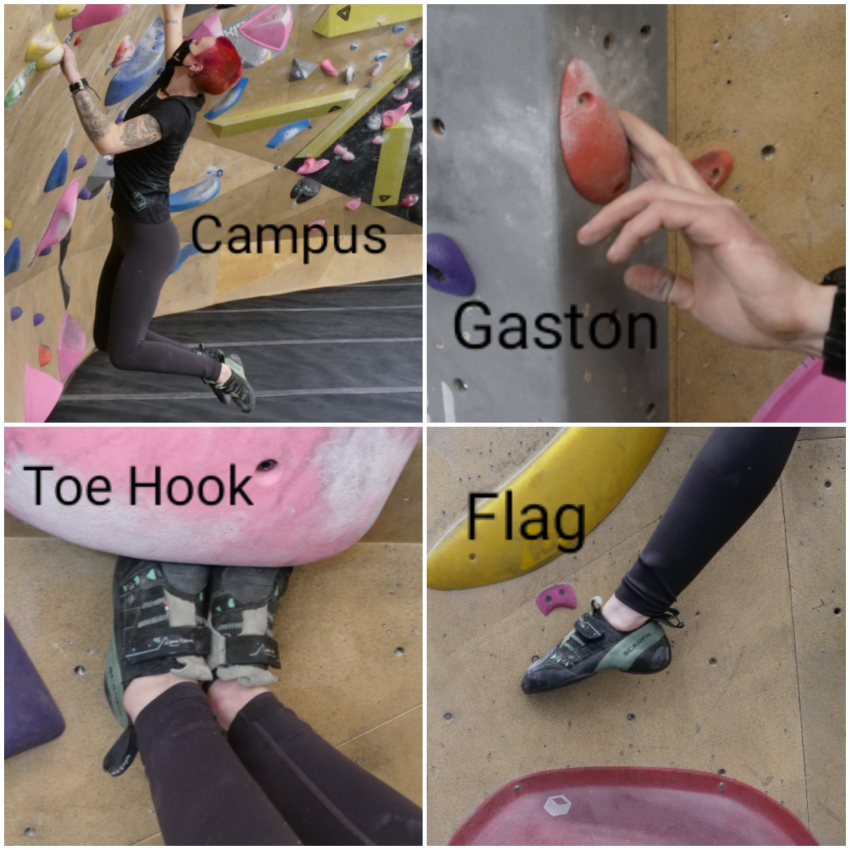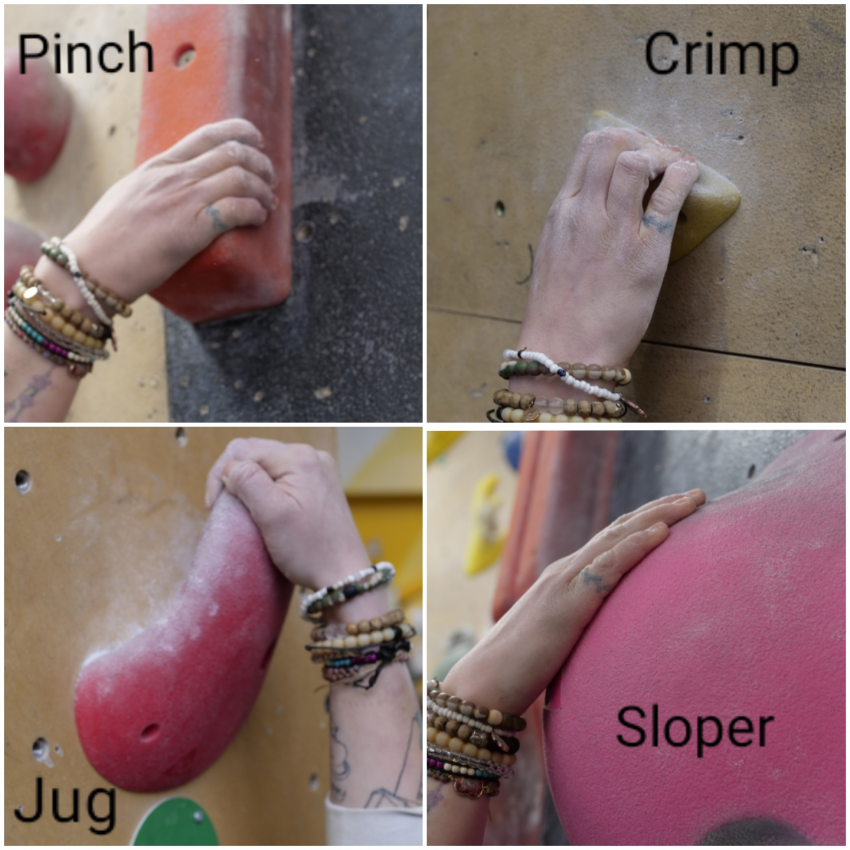Posted On
Walking into the gym for the first time and meeting the over zealous desk staff, as they set you up with your gear it dawns on you that you might not know what you’re in for. It seems simple enough, just go up right? While you’re putting on your shoes that are probably two sizes too small, you can’t help but overhear a group of climbers talking. “Just dino to the jug, then you can get a high heel hook and deadpoint to the finish.” With terms that describe sub-genres of the sport, body movements and what seems like a million different ways to hold onto a rock, it is easy to be intimidated by seemingly impenetrable climbing jargon. My first time in a climbing gym, a kind climber came up and offered me beta on a climb. I smiled and nodded along as if I knew what beta was. To make your first visits to the gym a little easier here’s a few terms that can help you avoid the ever so awkward smile and nod.
Let’s start with some basic knowledge to get through the door:
- Bouldering vs Routes: Bouldering is shorter walls with big comfy mats underneath to help protect your falls. Routes are tall walls which require you to be tied in and have a belayer
- Lead vs. Toprope: When climbing routes there are two types of climbing allowed in most gyms. Top rope is when the rope is already at the top of the wall through an anchor, this mitigates risks of falling and allows you to take a break at any point on the wall. Lead climbing is often learned so you can transition to outdoor routes. When lead climbing the rope is on the ground and you clip it into draws as you climb up. This means that falls can be much larger.
- Belay/Belayer: Belayi
ng is for route climbers. It is the person on the ground that helps manage slack for their climber. - Chalk: Whether liquid or powdered most gyms will offer you chalk when you go in. They do not want you making art on their walls. Putting chalk on sweaty hands can help maintain better friction on the wall. It isn’t a necessity but it sure is helpful
- Crux: This is the hardest move or sequence of moves on a climb
- Send: When you complete a climb from start to finish. “JUST SEND IT!”
- Beta: information about the climb or type on how to send it
Climbing holds:
- Jugs: Big open holds that you can fit your hand in. They are easy to grip and make for an excellent rest!
- Slopers: Are round holds with little to no positive edge for hand placement. Keep your body weight opposed to the direction of pull and aim for a low center of gravity. Friction is key with these holds
- Pinches: These are exactly what they sound like. Being able to wrap your thumb around the hold will offer lots of extra friction
- Foot chips: No these are not some nasty snacks. Foot chips are small flat holds that are intended to be used as foot placements. Try to intentionally place your foot on the hold while pressing your heel down toward the ground.
- Crimps: Small ledge-like holds that you can only place the pads of your fingers on. Make sure to keep your body weight close to the wall to maintain better grip.
Climbing movements:
- Campus: To forgo the evolutionary miracle of feet and climb using only your arms
- Gaston: Named after a french alpinist, this move requires your arms/palms to push in an outward motion rather than pulling towards your body. To grab a hold as a gaston you rotate your palm away with your thumb pointing down. You can generate friction against the hold by pressing outward toward the elbow.
- Smear: Smearing is done when there is no good foot placement so you push your foot into the wall and hope for the best
- Flag: Placing your foot somewhere on the wall to help with balance
- Heel Hook: Uses the heel of your foot to hook onto a hold
- Toe Hook: Same as a heel hook but with your toes
- Bat Hang: Hanging by only your feet, much like well…a bat
- Mantle: Moving your hands into a press to get over or onto a hold, much like getting out of a pool
- Elvis leg: When you calves start to feel the groove and involuntarily start bouncing.

While this is a limited list and there are many more words and phrases to learn, it is a good starting point to get you in the door and sounding like a pro. Climbing can be scary even without the language barrier, by adding these terms to your vocabulary it will help you to better communicate with your fellow climbers.
